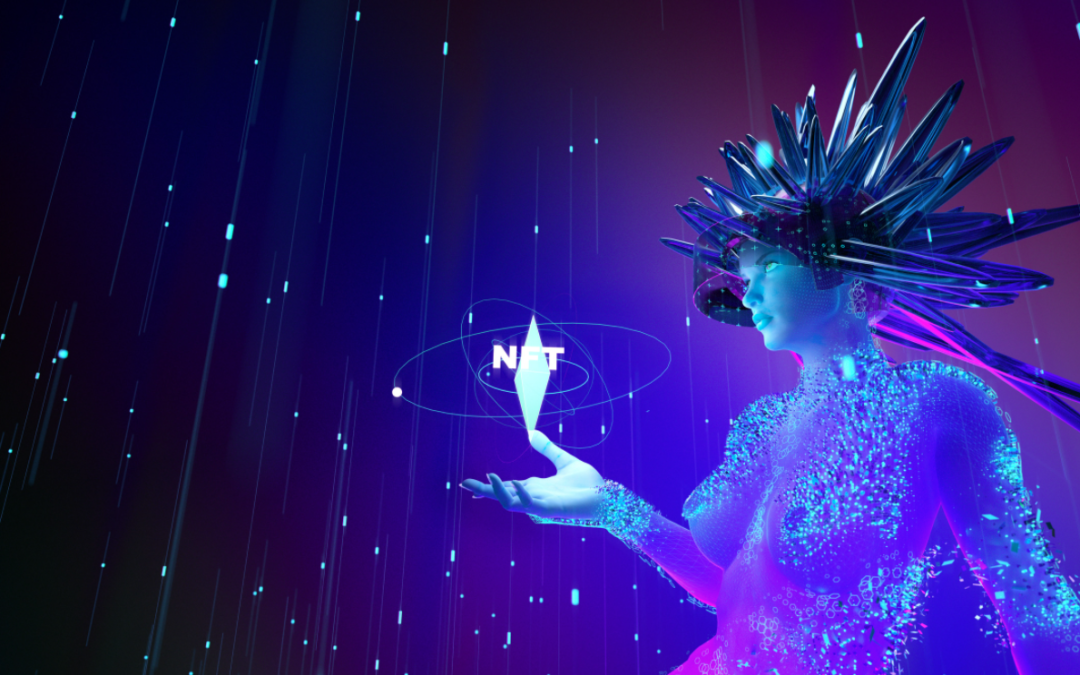Crypto art is the newest digital revolution taking the world by storm. These artworks, collectible online assets that can be stored digitally, may make art more accessible to those who don’t collect physical art or associate in art circles.
The emerging market centers around digital artworks traded on blockchain as non-fungible tokens (NFTs). Every piece of crypto art is original and represented by an NFT with its own set value.
Cryptocurrency itself is set to challenge the traditional financial markets, and fine art is the latest application of blockchain. The innovation may be the ideal technology for a digital money system like Bitcoin, and it is universal in use cases. As both individuals and businesses can use the technology to create different products, services and tools for today’s consumers, it’s natural a fit for the art world.
The technology can authenticate and register existing physical pieces of art, from paintings to sculptures. This is acquired through tokenization which prevents forgeries and tracks the ownership of the artwork. In this case, the process is very similar to tokenizing jewels or real estate. It’s still unclear whether physical artworks are regarded as crypto art. However, since art is transferable to digital, some art pieces may be considered to be both physical and crypto art in the future.
One of the advantages of art and blockchain is that digital artwork is registered directly onto a public or private blockchain. Each artwork is represented by a unique non-fungible token (NFT), thus making the ownership and sale of art possible in these new decentralized environments.
Non-Fungible Tokens
NFTs are blockchain-based tokens that represent something rare and unique. Unlike fungible digital tokens like Monero, NFTs are not mutually interchangeable. For instance, there isn’t a distinction between two different types of Monero, but each NFT is unique and has its own value, even if they have the same structure and live on the same blockchain.
In 2017, NFTs achieved widespread recognition due to CryptoKitties, a popular blockchain collectible game where each token is valued as a virtual cat with unique identifiers. Users can collect, purchase, breed, donate and sell these virtual cats. Some cats were sold for six figures in Ether.
Crypto art relies on these NFTs, primarily issued on Ethereum with the ERC-721 standard. Many special online marketplaces that cater specifically to NFT-based artwork, where it is then exhibited and traded.
The Crypto Art Market
While DeFi is recognized as the fastest-growing sector within blockchain, crypto art is a worthy competitor. According to CryptoArt.io, the market value has grown to nearly $90 million, with more than 67,000 pieces of art sold.
The database also monitors successful crypto artists. The largest blockchain-based artwork trade occurred when the artist, Beeple, sold his NFT artwork for a staggering $69 million at Christie’s. He also sold a collection of 20 pieces of art for $777,777 and over 800 other pieces of art for over $9 million.
In February 2021, another collector paid $650,000 on a demonic piece of art called a Hashmask. The purchase was carried out through the OpenSea platform. The Hashmask is a platform run by Suum Cuique Labs, a Swiss-based venture that hosts a collection of more than 16,000 unique digital portraits from various artists.
Overall, the market has more than tripled in the first weeks of 2021, due to the ETH price surge. The increased popularity of NFT artworks is creating even more projects and platforms geared toward trading crypto art. Ethernity, for example, is a new NFT art project backed by the Winklevoss twins and will auction off digital artwork backed by celebrities. The funds will then go to charities picked by public figures.
Investing in Crypto Art
As the market surges for NFTs, the space is becoming profitable for both investors and artists. Many online marketplaces allow users to browse through digital artwork in online galleries and purchase what they wish.
Not only is it accessible, but it’s also a good investment. Mainly, collectors will pay in Ether, so investors prefer to monitor the ETH price before purchasing. Currently, the most popular platforms for buying and selling include OpenSea, Rarible, Nifty Gateway and SuperRare.
OpenSea is the oldest NFT platform. On this site, users can find a variety of NFT artworks, collectibles, sports trading cards and virtual world items. Hashmasks and CryptoPunks are the most popular NFTs sold on this platform. Users connect a Web 3 wallet into their browsers (MetaMask is a popular one). OpenSea then automatically connects to this wallet’s funds and then transfers them to the artist when you buy the art.
Rarible is another software platform that serves as a marketplace, allowing digital artists and creators to create and sell their custom crypto assets. It is set up as a distributed network created on Ethereum that enables trade without a middleman. On this platform, RARI, Rarible’s cryptocurrency, allows its users to vote on proposals central to the platform, moderate artists and curate featured artwork.
Nifty Gateway is run by Gemini, the US-based crypto exchange established by the Winklevoss brothers. Beeple prefers to sell on Nifty and the platform allows you to purchase pieces with a credit card.
SuperRare is another NFT marketplace that accepts only 1% of all its artist applicants. Users can like artwork posts and share through usernames that are linked to their ETH wallets.
While these are just a handful, there are roughly 50 platforms to publish and trade crypto artwork.
Overall, crypto art is spurring a revolution for artists and collectors alike. It is helping to build deeper interest in the art world and offering access to communities that may not have had the leisure to these types of creations previously. As blockchain and digital infrastructure evolve, Crypto art will become more prominent and, therefore, a worthwhile investment.

